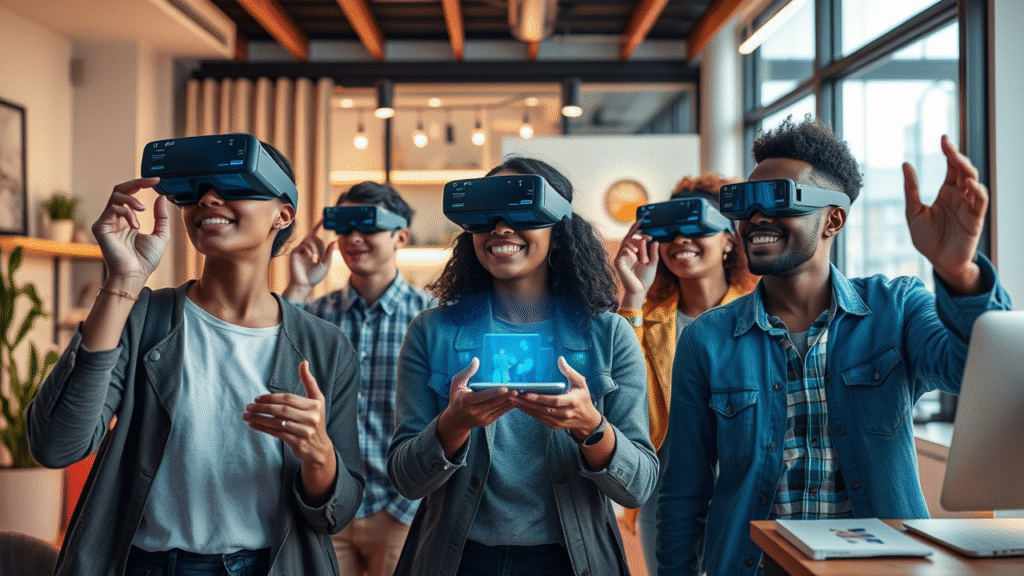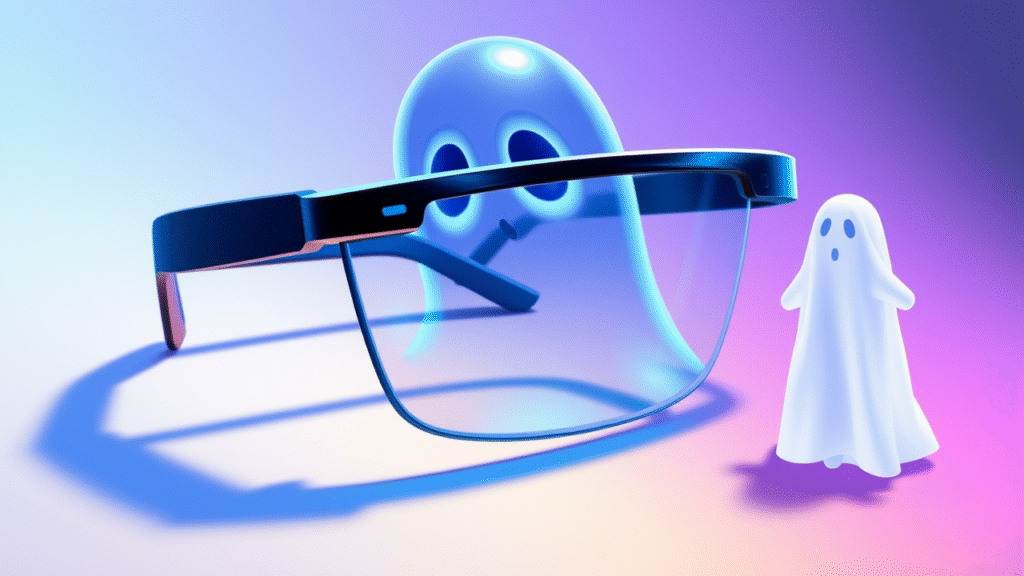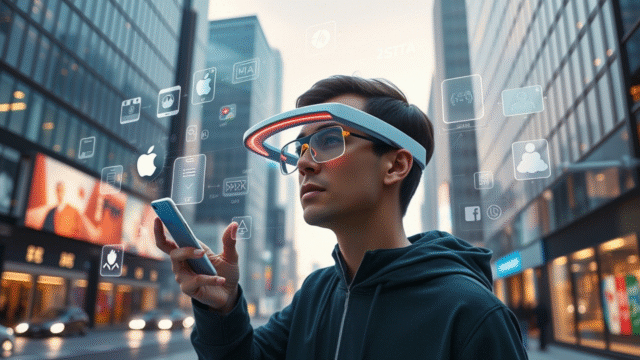When analyst Ming‑Chi Kuo dropped his latest supplier memo hinting at an “Apple Vision Air” debut in 2027, the mixed-reality world perked up instantly. Unlike vague rumor-mill chatter, Kuo’s notes pull threads directly from component orders, giving them a certain gravitational pull in tech newsrooms. According to his briefing, mass production is penciled in for the second half of 2027, positioning Vision Air as the headliner in Apple’s post‑Vision Pro roadmap.
Moreover, Spanish business daily Cinco Días corroborated the timeline, adding that Apple’s broader wearables push now spans seven distinct head-mounted devices three Vision models and four flavors of smart glasses. Put plainly, Cupertino is quietly laying track for an entire ecosystem of spatial computing gear, with Vision Air slated to be the first truly mass-market headset in the family.
From Vision Pro to Vision Air

Vision Pro dazzled early adopters but also made their neck muscles do overtime. Weighing roughly 600 g and starting at $3,499, the flagship rig is a technological marvel and a retail niche. Therefore, a lighter, cheaper sibling isn’t just logical; it is existential for Apple’s long-term ambitions.
Enter the Air moniker. Historically, whenever Apple adds “Air,” the product becomes thinner, lighter, and more affordable (think MacBook Air and iPad Air). Kuo estimates Vision Air will shed over 40 percent of Vision Pro’s heft, landing near 350 g. That singular change unlocks longer wear times, broader demographics, and far more everyday use cases, from remote design reviews to AR-assisted workouts.
Kuo’s Three-Year Roadmap in Plain English

Kuo’s memo actually outlines a trilogy of headsets:
- 2025 – Vision Pro refresh with an M5 chip.
- 2027 – Vision Air with an iPhone-class A-series chip.
- 2028 – A ground-up Vision Pro 2 with a brand-new industrial design.
This sequencing matters. By staggering releases, Apple keeps hardware fresh while also giving developers stable targets. It also means Vision Air arrives after developers have had two solid years to master visionOS, which helps ensure a robust app catalog on day one.
Materials, Silicon, and Missing Sensors
Analysts believe Vision Air will switch from laminated glass to high-grade polycarbonate and trade aluminum for magnesium to shave grams without sacrificing rigidity.
Internally, the headset is rumored to run the A21-class processor destined for the 2027 iPhone 19 Pro, leveraging Apple’s mobile-silicon energy efficiency.
However, slimming down has trade-offs. Kuo forecasts fewer depth sensors and the possible removal of EyeSight, the external lenticular display that shows an avatar of your eyes to onlookers. Cutting that feature alone saves weight, power draw, and $200-plus in bill-of-materials cost, clearing the path for a “significantly lower price” that analysts peg between $1,499 and $1,999.
How a Cheaper Vision Could Redraw the Market

Price elasticity studies show VR/AR adoption spikes as soon as hardware dips below the psychological $2 k mark. By targeting that band, Apple positions Vision Air against Meta’s rumored Quest Pro 2 and Samsung’s debut XR headset while still preserving a premium halo above mainstream VR goggles.
Transition words aside, the economics are compelling: a two-year-old iPhone-class chip amortizes R&D costs, while lighter materials reduce logistics fees. Therefore, Apple can widen its total addressable market and protect Vision Pro margins with classic Cook-era supply-chain jiu-jitsu.
Opportunity Knocks
With Vision Air, spatial computing shifts from curiosity to commercial platform. As hardware becomes lighter and cheaper, enterprise-grade AR will spill into consumer sectors: education, fitness, telehealth, and field service.
Consequently, every ionic app development company eyeing cross-platform reach should start piloting visionOS extensions now, because Apple is likely to keep SwiftUI for system-level UI while enhancing WebXR hooks for hybrid stacks. Ionic’s Capacitor already bridges WebView and native APIs; adding optic-tracking and gesture modules could turn existing mobile apps into hands-free panoramas with minimal refactoring. Early mover advantage, anyone?
Meta, Samsung, and the Ghost of Google Glass

Meanwhile, Meta’s Ray-Ban smart shades have surpassed two million units, and Meta plans to quintuple production capacity by 2026. Samsung is rumored to ship its first XR headset in South Korea this October. Even Sony is prototyping enterprise AR goggles.
Yet Apple’s integration moat remains formidable. iCloud sync, Siri audio presence, and Apple Silicon-optimized AI will function as lock-in glue. Add a lighter, more affordable headset to that stack, and rivals must compete on both price and ecosystem cohesion, an arduous double mandate.
Manufacturing Headaches
Slimming a headset is not as simple as swapping materials. Magnesium alloys can introduce electromagnetic interference, necessitating new RF shielding. Switching to plastic lenses means accepting stricter tolerance windows because polycarbonate flexes under heat. And then there is the battery: a lighter pack typically means fewer watt-hours, forcing Apple’s power-management silicon to squeeze every joule.
Moreover, Apple’s supply chain must ramp for tens of millions of units. Secure enough micro-OLED panels? Check. Negotiate exclusive capacity at TSMC’s 2 nm node for the A21 chip? Already in motion, if Kuo’s wafer allocation forecasts are accurate. In short, Vision Air’s success hinges not just on sexy renders but on mundane logistics mastery.
Use-Case Explosion
Because Vision Air is expected to weigh about as much as a chunky pair of ski goggles, daily-driver scenarios suddenly feel plausible. Commuters might pin a floating dashboard above a train seat; surgeons could overlay patient vitals mid-procedure; architects could walk a client through a 1:1 scale model on-site instead of in a sterile conference room.
Furthermore, Apple’s rumored Visual Intelligence AI layer could detect objects in real time, providing contextual voice prompts. imagine a language tutor correcting your pronunciation as you order coffee in Tokyo or a mechanic’s guide auto-highlighting engine components. The lighter the hardware, the easier it is to forget you’re wearing a computer.
The Dawn of Spatial Everyday Computing
To conclude, Vision Air feels like Apple’s attempt to take spatial computing from demo to default. Kuo’s timeline could slip; he is not infallible, but the broader trajectory is unmistakable. Apple wants a world where head-mounted gear is as ubiquitous as AirPods, and Vision Air is the bridge from early adopters to everyone else.
For developers, designers, and the next great ionic app development company, 2025–2027 is the build window. For consumers, 2027 might mark the year AR finally feels as normal as glancing at a smartphone. And for Apple, it could be the moment the post-iPhone era truly begins.
Read More: How Generative AI Applications Are Shaping the Future







